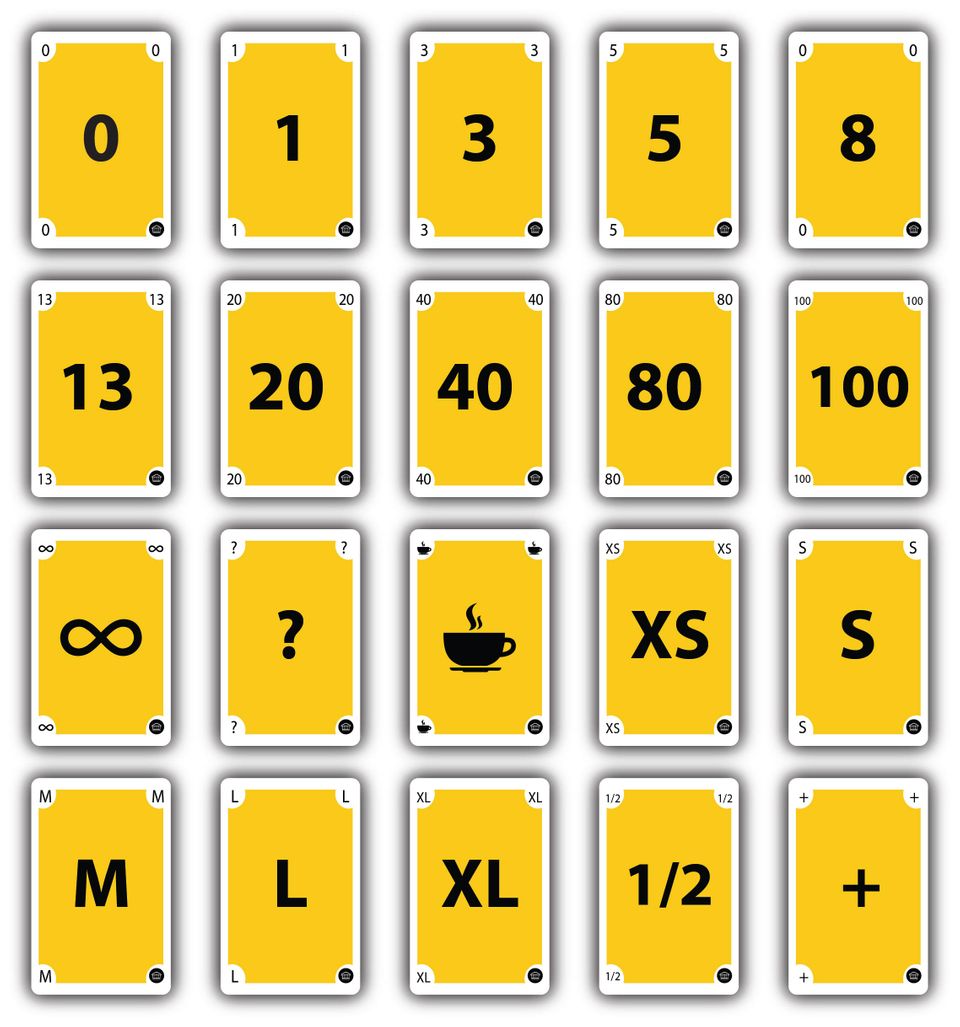Every IT project starts with an estimation process. Organizations need to understand the required effort, cost, duration, schedule dates... Development teams rely on estimates to prioritize work and build achievable schedules. Agile teams bring together all appropriate expert opinions to make the process as precise as possible.
Let’s imagine the Scrum team estimating effort of product backlog items. An open discussion is expected, but only a few members are actively participating, and the rest seem to agree with what others have given as estimates. The first number spoken aloud sets a precedent for subsequent opinions. Does it sound familiar?
In this article, we’ll talk about how planning poker gets everybody engaged, boosts the quality of the estimates, and speeds up the development process.
What is planning poker?
Planning poker (or estimation poker) is a gamified method for scrum teams to estimate their efforts for achieving business goals. It lets teams efficiently assess how big and time-consuming the tasks in the upcoming sprint are. It's a widespread Agile technique loved by many, especially remote, teams. It's quick, collaborative, and helps consider all the factors that could impact the implementation of the task at hand.
How to play planning poker?
- The team takes an item from the backlog and discusses it.
- Everybody mentally formulates an estimate, then picks a card with the number that reflects their estimate. Estimation units depend on the team, but often story points or T-shirt sizes are used.
- When everybody's picked a card, every team member reveals their estimate. If there's a big difference in estimates, the team discusses why these particularly low or high estimates have been given.
- The team settles on the estimate everyone agrees with either through discussion or by running another quick round of estimation for this task.
How does planning poker solve estimation challenges?
- The open discussion gets everyone on the same page and establishes mutual understanding among team members.
- While each task is accessed from different members' points of view, the opinions are not affected by other team members until the discussion of the individual estimates.
- The difference between team members' estimates prompts discussions that may uncover interesting insights, biases, lacking information, and assumptions that can be addressed right there and then.
- Online poker planning tools ease the process by automating all your manual work.
Summing up
Estimation is a fundamental and unavoidable element of the software development process. While there are certain difficulties teams face while estimating tasks, planning poker effectively deals with them - that’s why it’s so popular among development teams. Regardless of the team’s maturity level or its size, we consider the technique worth giving a try. The only tricky task is to choose the right tool, and here:
1) Wisebits Group has it covered. They used a number of tools and described the pros and cons of each in this article, as well as shared their perfect fit. Check it out, and may the estimation force be with you!
2) Chpokify is happy to help. You can request a demo, and their team will acquaint you with the tool and answer any questions you have. And may the estimation force be with you!

